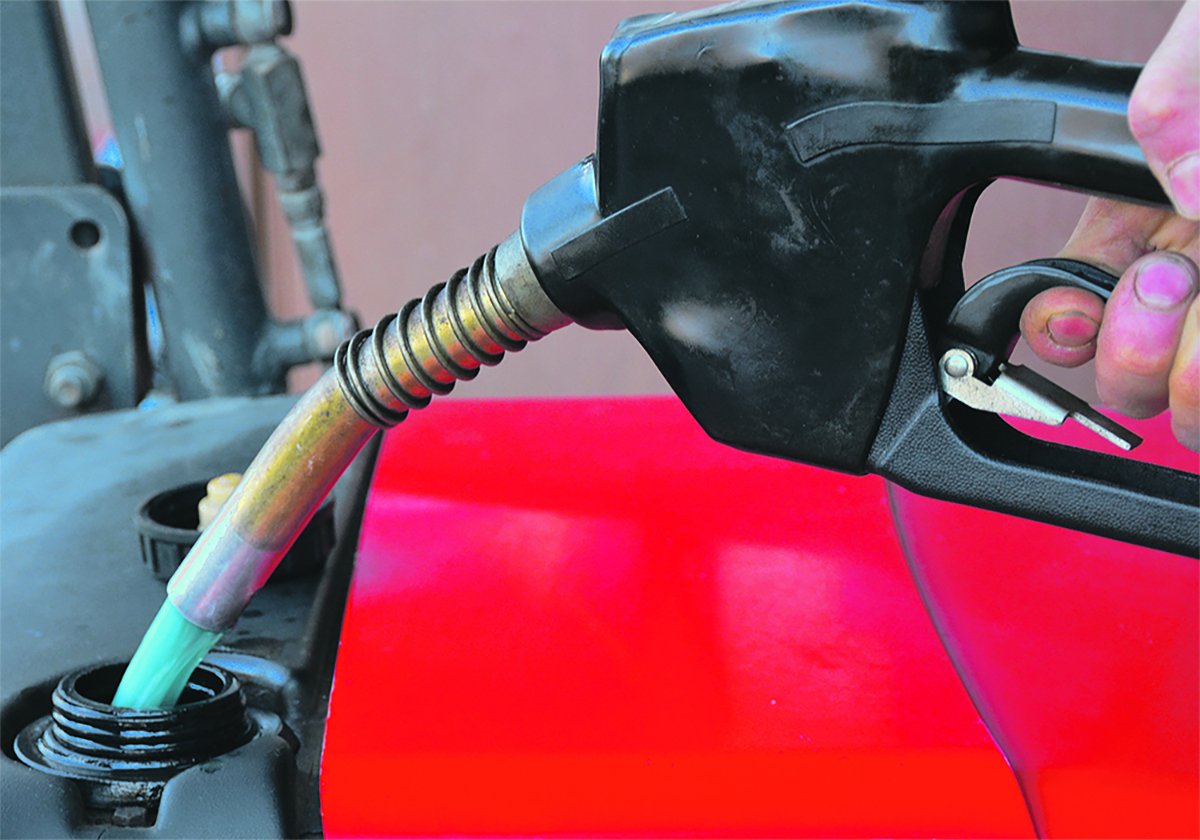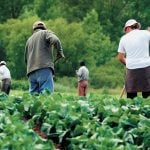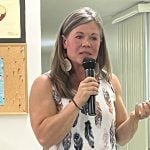This spring is turning into a cruel, cold season: too much moisture in some regions and heartbreaking drought in others.
Grazing land has turned to dust in northern and interior regions of British Columbia and marshland in the Interlake region of Manitoba.
Much of Alberta has received excessive moisture, but the Peace River district has faced three years of hard drought, said Jaime Borduzak- Semple of the Peace Country Beef and Forage Association.
Cattle are not normally turned into pasture for another month, but conditions do not look promising. Carrying capacity on pastures has been reduced and Borduzak-Semple estimates cow herds have been reduced by as much as 40 percent.
Read Also

Alberta may eliminate marked fuel
Alberta may soon stop selling dyed gasoline and diesel.
“All the reserves are gone and whatever snow we did get was sucked right in,” she said.
Plants are slow to regrow because of this spring’s cold temperatures, and creeping red fescue grasses have died off.
“All that is surviving is plants with taproots like a dandelion,” she said.
Hay yields are also down.
“A typical hay field should be producing you probably three (large) bales an acre. A lot of the production up here was less than one,” she said.
Producers imported feed and a government subsidy provided aid for transportation.
The situation is worse in B.C., said rancher Wayne Ray of Fort Fraser, west of Prince George. Conditions are about three weeks later than normal in an area stricken with nine years of drought.
Ray’s rainfall records tell him that precipitation has decreased 30 to 40 percent in the last decade. Average rainfall 10 years ago was 450 to 600 millimetres from April to October.
“Last year we were down to virtually no rain from April to August,” he said.
By last Aug. 23, he had recorded 16.8 mm for the season.
He received two mm of rain in April and only two nights were above freezing, so little is growing.
Ray bought $10,000 worth of hay last year because the crop was 40 percent of normal. He has cut back his herd and may reduce it again.
Dugouts did not fill last year, although he has seen some brimming with water this spring.
However, other dugouts have less than a metre of water when they should be 4.5 metres deep. He hauled water to his cattle last summer for the first time since he started farming in the early 1980s.
The region received snow, but Ray fears it may be too late because the soil seems to be losing its ability to absorb moisture.
“The ground is so dry underneath there might be three or four inches of water laying on top and then there are two or three inches of slimy mud and when you go through that it is just hardpan,” he said.
“Our pasture is a disaster here.” Ray has received no help from government programs such as Agri-Stability because his operation has had negative margins for so long that there is nothing left to calculate for an average.
He sold land last year to pay debt.
His costs and break evens continue to rise. Calf prices last fall were $1.22 per pound, but he calculates his break even at $1.24 per lb.
“This year prices are up quite a bit, but by the time you factor in the fuel, fertilizer, we are way behind. We need about $2 to equal what we got in 2000,” he said.
He received $1.48 per lb. in 2001.
His fertilizer blend was $335 per tonne last year and this year the same formula costs $760. Fuel is also going up and the British Columbia government is increasing its carbon taxes.
“There are a lot of people giving up and leaving,” Ray said.
The situation is brighter for Doug Fossen at Rock Creek east of Osoyoos. His region has received better moisture and runoff, but he estimates spring is two weeks behind because of cold weather.
“Our drought cycle in this area has broken and it is looking up for us in this area if it just warms up,” he said.
Fossen may feel better about this year, but his neighbours are leaving.
“The cow numbers are really dropping in this area,” he said.
Range areas are vacant but there are no cattle to fill them.
Manitoba is suffering from the other extreme.
The most recent blizzard at the beginning of May killed significant numbers of newborn calves and dumped more unwanted snow and moisture, said provincial forage specialist Pam Iwanchysko in Dauphin.
“This dump of snow was equivalent to the amount of snow we had the whole entire winter.”
Producers in her area have supplemented livestock with hay, but that is in short supply
“It is going to be a really tough decision,” she said. “A lot of farmers have liquidated their herds down to the bare minimum.”
Iwanchysko has not been able to fully evaluate what forage is left because it is too wet to enter fields.
“If there is anything that did survive the winter, it is probably drowned out now,” she said.
Last year’s hay quality was extremely poor. Feed tests showed energy levels were low and protein levels were average to below average, which forced producers to supplement with pellets.
Pastures further south are also two to three weeks behind normal development, said forage specialist Jane Thornton at Brandon.
The grimmest situation is found in Manitoba’s Interlake region. It is home to a large number of cow-calf herds, but forage specialist Tim Clarke of Ashern does not know how long people can continue.
“Near Shoal Lake, there are thousands of acres that are under water and people’s livelihoods are completely at stake,” he said.
“We need a drought.”
Many lowland pastures have become marshes in the last few years.
“It is impacting the producers’ bottom line because you have more open cows because the quality of the grass,” he said.
Bull rushes and red willows have invaded. They are not palatable and do not provide good feed value.
“The feed value is so much diminished that it is not worth going out there and harvesting for native hay,” Clarke said.
———
access=subscriber section=livestock, none, none















